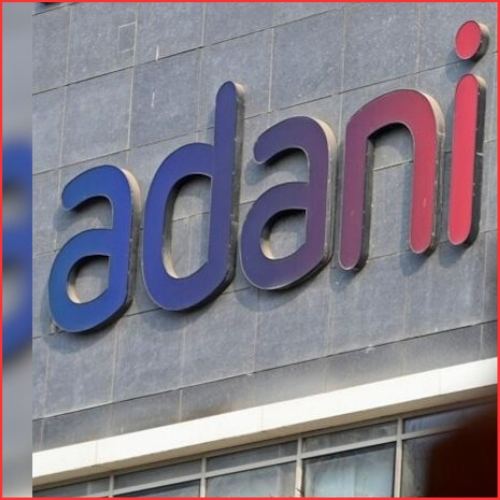Every January brings with it new aspirations and expectations, one of which is a Union Budget wishlist for businesspeople, salaried individuals, and finance specialists alike.
There is always a long-term goal of lowering tax rates, saving taxes, and simplifying compliance. This year is no exception. Let’s have a look at the most important forecasts for direct and indirect taxes in 2023.
Typical expectations of the common person
The baseline exemption limit has not been adjusted in nearly ten years. As a result, the government gradually increased the rebate taxpayers can claim on incomes less than Rs.5 lakh every year. In addition, a new tax regime was implemented, but most taxpayers disliked its confusing structure and lack of deductions.
What people actually want to see this year is a rise in the basic exemption level, as well as a change in tax slabs and deduction limitations to minimize total tax payments. Taxpayers and experts hope that the 80C deduction ceiling will also be increased this year to at least Rs.2.5 lakh, as it has been unchanged for nearly a decade. Separate deductions for premiums paid and medical bills would be a welcome addition to the health insurance industry.
Another big change that taxpayers would like to see is an increase in the maximum Public Provident Fund (PPF) contribution. Individuals can currently invest up to Rs.1.5 lakh per fiscal year, and the restriction on this popular investment choice has not changed in years. In the pre-Budget memorandum, the Institute of Chartered Accountants of India (ICAI) advocated raising this limit to Rs.3 lakh. This adjustment would be especially beneficial to non-salaried taxpayers who do not have access to the Employees’ Provident Fund (EPF), which needs equal payment from the employer.
To encourage taxpayers to invest in security, the ICAI has also suggested that expenses connected to other insurance premiums paid, such as house insurance, travel insurance, personal accident insurance, and so on, be allowed as a separate deduction.
When it comes to House Rent Allowance (HRA), taxpayers receive an income tax deduction based on a set of rules that varies depending on whether they live in a metro or non-metro city. However, the metro cities in question were only New Delhi, Mumbai, Chennai, and Kolkata. Analysts feel that the ‘50% of basic salary + dearness allowance’ rule should be extended to other significant metro cities such as Bangalore, Ahmedabad, Gurgaon, and Hyderabad, among others, given the skyrocketing rents in these areas.
Similarly, given that rents in most Indian cities are currently many times the current level of Rs.5,000, an increase in the Section 80GG rent ceiling to Rs.10,000 should be considered.
The capital gains tax structure is being simplified.
In India, capital gains tax is now quite convoluted, with different holding periods specified for different types of assets to determine if the capital gains produced are long-term or short-term, and whether indexation benefits are available. Once detected, these gains are subject to various tax rates and surcharges. Investors are looking for a simpler capital gains tax regime with 2019 Budget, which should reduce litigation and disagreements on the subject.
Corporate tax rate uniformity
In India, different sectors are currently taxed at varying income tax rates. Companies are pressing for the implementation of a unified corporation tax rate of 15% in order to establish India as a competitive hub for both manufacturing and services industries. This would benefit not only the manufacturing sector but also the service sector.
Nonetheless, both corporate and individual tax breaks are available. Partnership firms and LLPs, on the other hand, continue to be taxed at a flat rate of 30%. As a result, the government may consider instituting a comparable concessional rate for them.
In addition to changing the tax slabs and rate structure, people and businesses alike are hoping for clarification on crypto currency rules in India in the 2018 Budget. While the government imposed taxes on digital assets for the first time last year, the industry lacks regulatory standards. The establishment of structured regulations governing the trade of digital assets will protect investors and prevent unlawful transactions from occurring.
The government’s major goal in 2019 Budget should be to broaden the tax base rather than impose harsh rules and surcharges on existing taxpayers. India has a very low taxation base, and the government should make full use of technology to improve that. Potential taxpayers must be urged to file their tax returns, which will require slightly more effort given the recent epidemic and growing inflation. Measures such as simplifying the present tax structure, including surcharges into the tax rate, or instituting a flat tax rate may help to broaden the taxpayer net.
A reform of the indirect tax system?
GST has been in effect in India for nearly five years, and every year since then, GST taxpayers have been subjected to a never-ending series of revisions to the GST law. Some of the most significant GST reforms have been implemented through imposing rigorous restrictions on input tax credit (ITC) claims. It began as an attempt to reduce ITC claims on forged invoices, and there has been no turning back since. The onus is now almost entirely on the recipient taxpayer to ensure that suppliers file GST returns and pay GST, failing which they forfeit their ITC claims.
Another significant change has been e-invoicing. With a few exceptions, the implementation of e-invoicing has been the finest measure to assure compliance and timely payment of taxes. It is currently applicable to enterprises with revenue above Rs.10 crore.
“There’s no point in fixing what isn’t broken.”
Given how successfully the GST and e-invoicing laws have served both businesses and the government in India, it seems unlikely that Budget 2023 would see an overhaul of the indirect tax system, much alone any big adjustments. Though there has been pressure to integrate the 12% and 18% tax slabs in order to reduce the total number of GST slabs, this is unlikely to happen in Budget 2023.
Instead, companies should anticipate to see modifications to the GST Act in Budget 2023 based on recent GST Council recommendations in Council sessions, particularly on subjects pertaining to the decriminalization of GST-related offenses.
Aside from minor changes to the GST statute, rate rationalization may be implemented to address issues such as the inverted duty structure on some goods and services.
Read More-GST Collection touches 1.49 lakh crore; 15% up year-on-year basis















